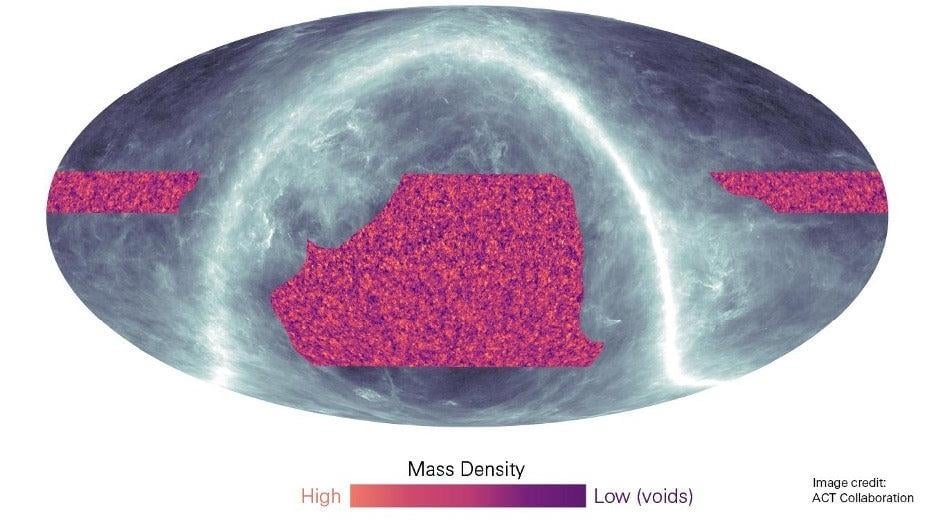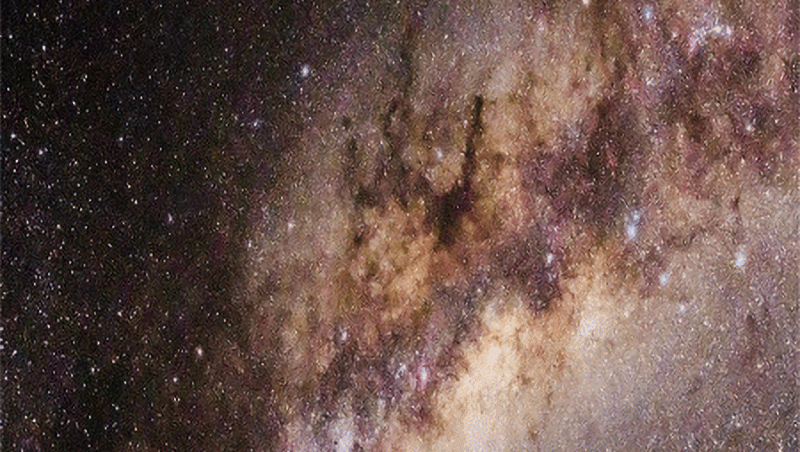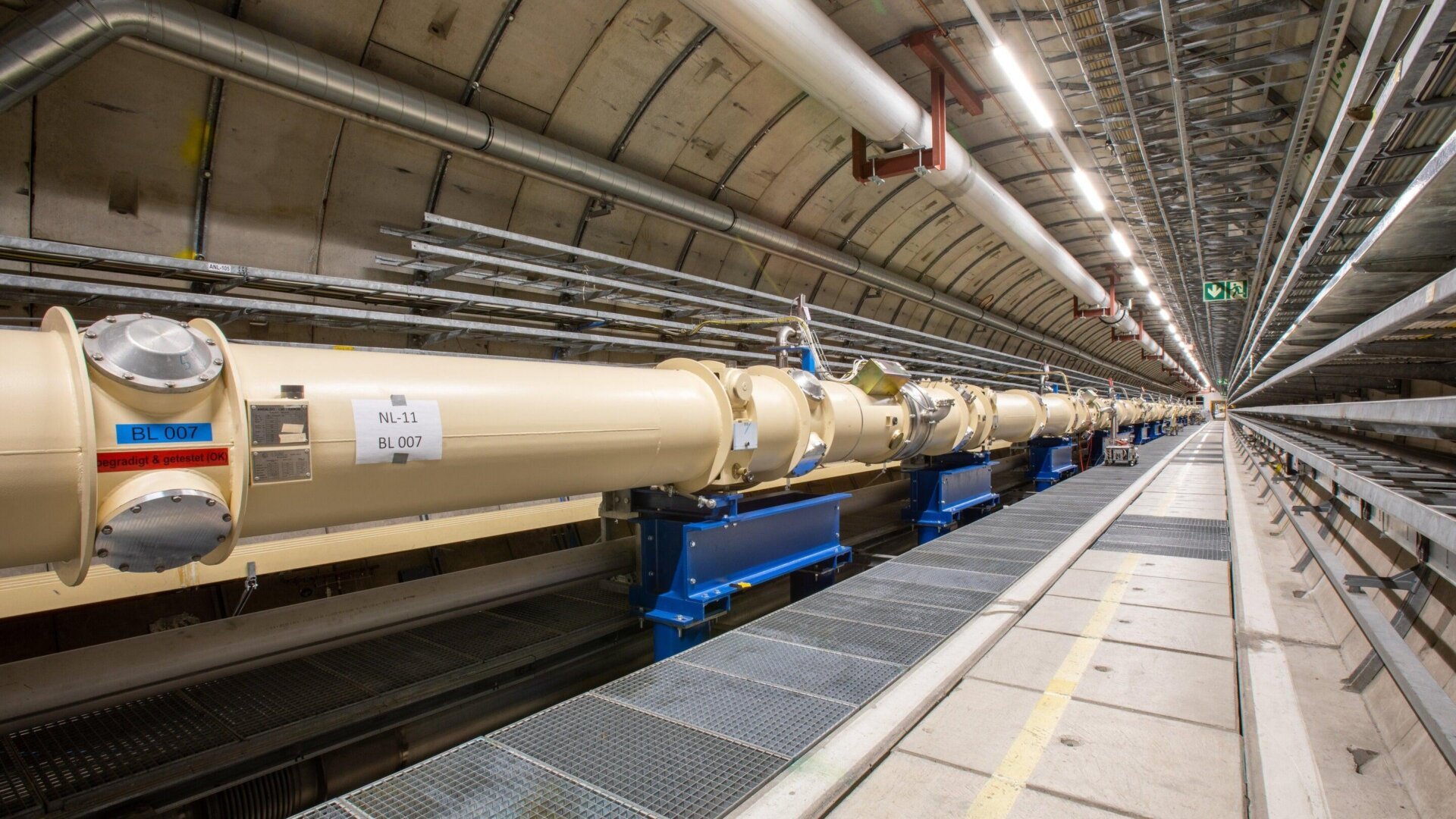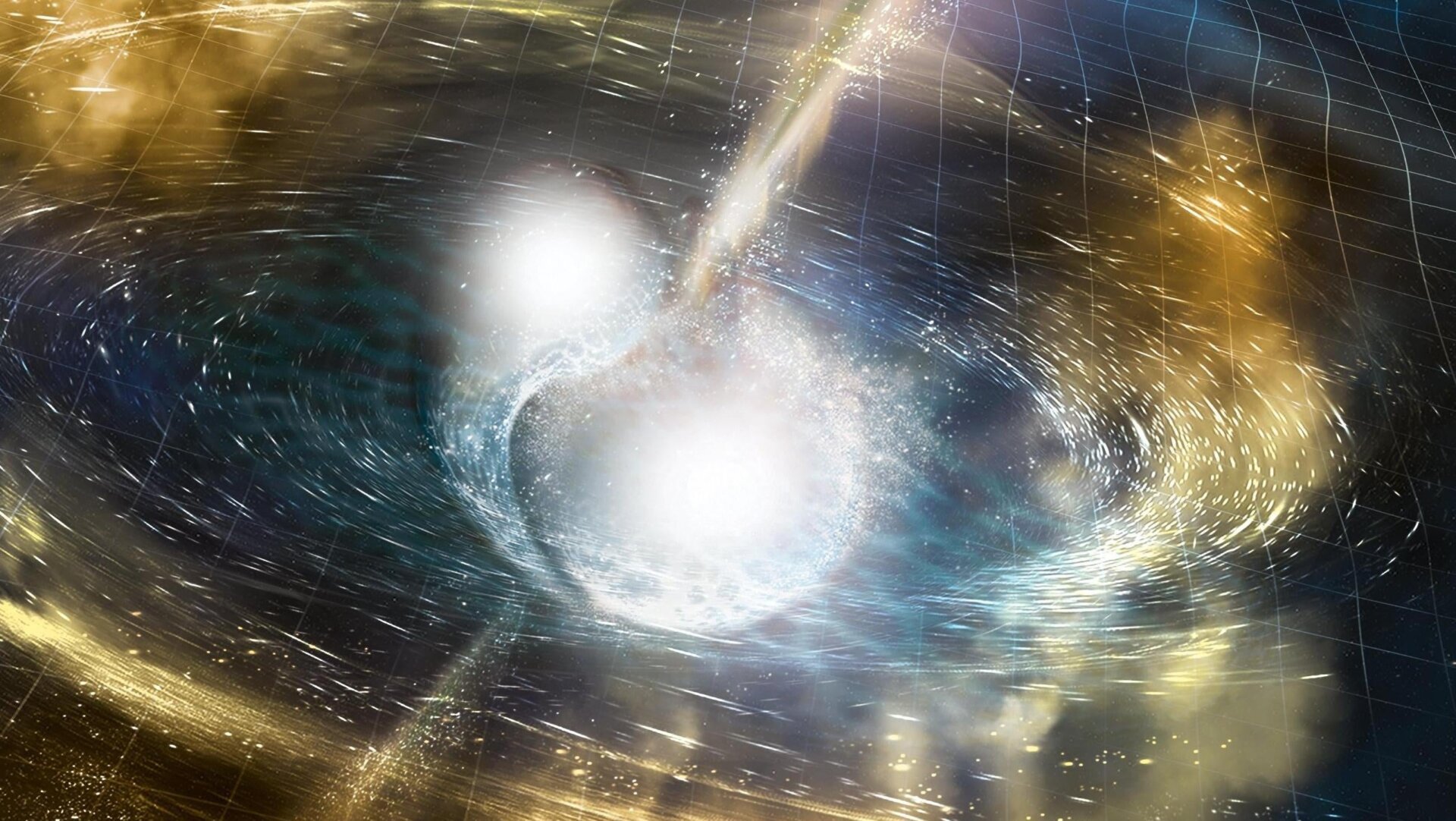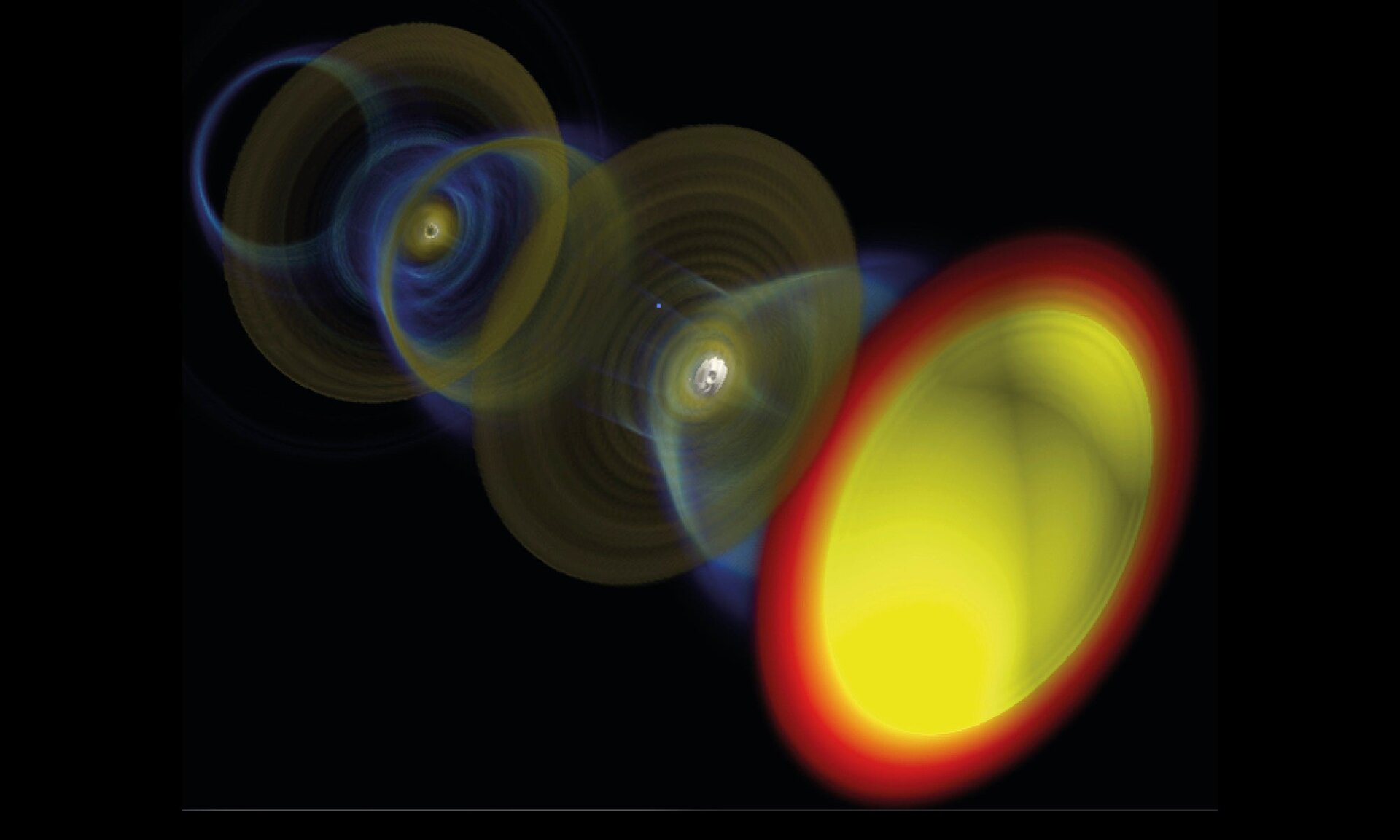The distribution of dark matter across a quarter of the sky has been meticulously mapped by scientists using data from the Atacama Cosmology Telescope (ACT) in Chile. This map, presented at the Future Science with CMB x LSS conference in Kyoto, Japan, uses the cosmic microwave background (CMB) as a backdrop to reveal the distribution of mass stretching back billions of years.
Dark matter, comprising about 27% of the universe, remains invisible to direct observation. Its existence is inferred through its gravitational influence on visible matter. This new map provides further insight into this mysterious substance.
Mapping the Invisible Universe
“We have mapped the invisible dark matter across the sky to the largest distances, and clearly see features of this invisible world that are hundreds of millions of light-years across,” explained Blake Sherwin, a cosmologist at the University of Cambridge. He added, “It looks just as our theories predict.”
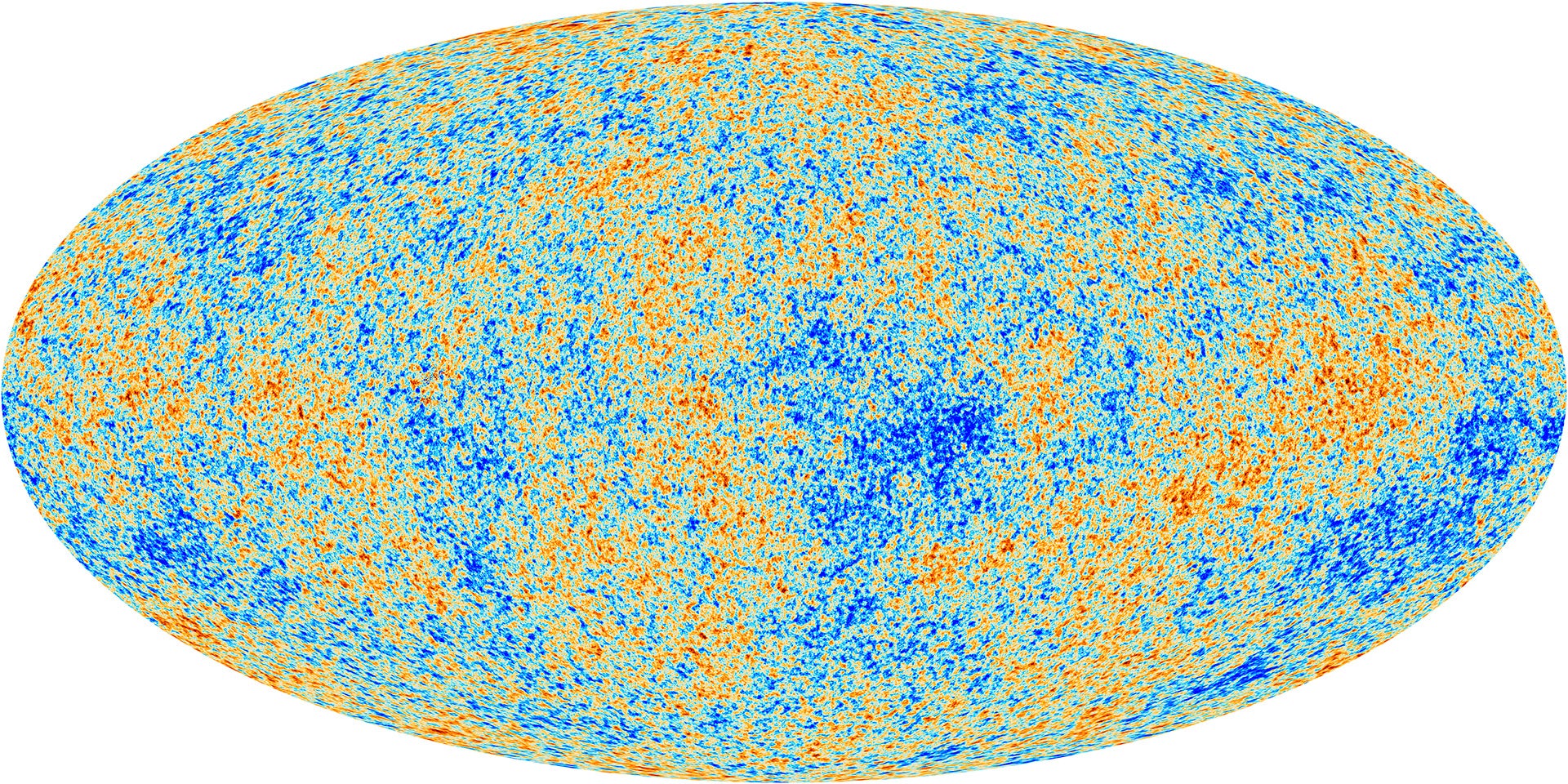 The cosmic microwave background as seen by the European Space Agency’s Planck observatory.The cosmic microwave background as observed by the European Space Agency’s Planck observatory. Image: ESA
The cosmic microwave background as seen by the European Space Agency’s Planck observatory.The cosmic microwave background as observed by the European Space Agency’s Planck observatory. Image: ESA
Scientists investigate dark matter through Earth-based experiments seeking particles like axions and WIMPs, and through large-scale cosmic observations focusing on its gravitational effects. The ACT, which refined the universe’s age in 2021, plays a crucial role in these observations. This new map builds upon previous work from the Dark Energy Survey and the South Pole Telescope, which confirmed matter distribution estimations and revealed a less clumpy distribution than initially thought.
Validating Einstein’s Theory
This latest map addresses a key aspect of Einstein’s general relativity: how massive objects like supermassive black holes warp light from distant sources, including the CMB – the oldest detectable light from the Big Bang’s aftermath. Researchers used the CMB as a backlight to highlight denser regions in the universe.
“It’s a bit like silhouetting, but instead of just having black in the silhouette, you have texture and lumps of dark matter, as if the light were streaming through a fabric curtain that had lots of knots and bumps in it,” described Suzanne Staggs, director of the ACT and a physicist at Princeton.
She added, “The famous blue and yellow CMB image is a snapshot of what the universe was like in a single epoch, about 13 billion years ago, and now this is giving us the information about all the epochs since.”
Comparing Cosmic Maps
The new analysis suggests the clumpiness of dark matter aligns with the standard model of cosmology, based on Einstein’s theory of gravity. Eric Baxter, an astronomer at the University of Hawai’i and co-author of the earlier dark matter map released in February, explained the differences in the maps. His team’s map was sensitive to low redshifts (closer, more recent universe), while the ACT map focuses on CMB lensing at higher redshifts, covering a vaster scale.
“Said another way, our measurements and the new ACT measurements are probing somewhat different (and complementary) aspects of the matter distribution,” Baxter clarified. “Thus, rather than contradicting our previous results, the new results may be providing an important new piece of the puzzle about possible discrepancies with our standard cosmological model.”
He further elaborated, “Perhaps the Universe is less lumpy than expected on small scales and at recent times (i.e., the regime probed by our analysis), but is consistent with expectations at earlier times and at larger scales.”
The Future of Dark Matter Research
New instruments like the upcoming Simons Observatory in the Atacama, scheduled to begin operations in 2024, will significantly enhance mapping capabilities. It is projected to map the sky nearly ten times faster than the ACT. Combined with the Vera Rubin Observatory’s massive digital camera, also in the Atacama, these advancements promise exciting discoveries in the field of dark matter research.
Conclusion
The new dark matter map from the Atacama Cosmology Telescope provides compelling evidence supporting Einstein’s theory of gravity. It offers a deeper understanding of the distribution of dark matter across vast cosmic scales and complements previous research. Future instruments and observations promise to further illuminate the mysteries of this elusive substance and refine our understanding of the universe’s composition and evolution.



